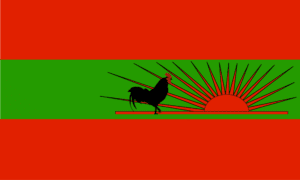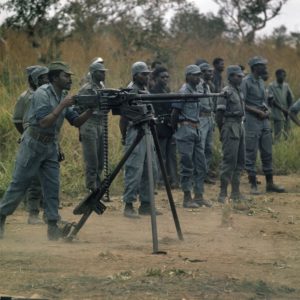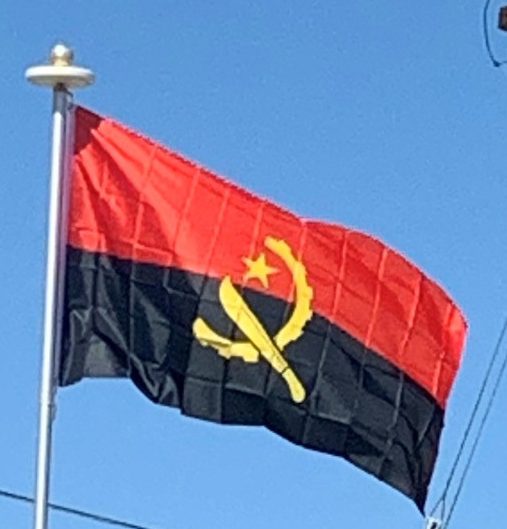The MPLA attempted to move its headquarters from Conakry to Léopoldville in October 1961, renewing efforts to create a common front with the FNLA, then known as the Union of Angolan Peoples (UPA) and its leader Holden Roberto. Roberto turned down the offer. When the MPLA first attempted to insert its own insurgents into Angola, the cadres were ambushed and annihilated by UPA partisans on Roberto’s orders—setting a precedent for the bitter factional strife which would later ignite the Angolan Civil War.
Civil War:
Throughout the war of independence, the three rival nationalist movements were severely hampered by political and military factionalism, as well as their inability to unite guerrilla efforts against the Portuguese. Between 1961 and 1975 the MPLA, UNITA, and the FNLA competed for influence in the Angolan population and the international community. The Soviet Union and Cuba became especially sympathetic towards the MPLA and supplied that party with arms, ammunition, funding, and training. They also backed UNITA militants until it became clear that the latter was at irreconcilable odds with the MPLA.

The collapse of Portugal’s Estado Novo government following the 1974 Carnation Revolution suspended all Portuguese military activity in Africa and the brokering of a ceasefire pending negotiations for Angolan independence. Encouraged by the Organisation of African Unity, Holden Roberto, Jonas Savimbi, and MPLA chairman Agostinho Neto met in Mombasa in early January 1975 and agreed to form a coalition government. This was ratified by the Alvor Agreement later that month, which called for general elections and set the country’s independence date for 11 November 1975. All three factions, however, followed up on the ceasefire by taking advantage of the gradual Portuguese withdrawal to seize various strategic positions, acquire more arms, and enlarge their militant forces. The rapid influx of weapons from numerous external sources, especially the Soviet Union and the United States, as well as the escalation of tensions between the nationalist parties, fueled a new outbreak of hostilities. With tacit American and Zairean support the FNLA began massing large numbers of troops in northern Angola in an attempt to gain military superiority. Meanwhile, the MPLA began securing control of Luanda, a traditional Ambundu stronghold. Sporadic violence broke out in Luanda over the next few months after the FNLA attacked MPLA forces in March 1975. The fighting intensified with street clashes in April and May, and UNITA became involved after over two hundred of its members were massacred by an MPLA contingent that June. An upswing in Soviet arms shipments to the MPLA influenced a decision by the Central Intelligence Agency to likewise provide substantial covert aid to the FNLA and UNITA.

In August 1975, the MPLA requested direct assistance from the Soviet Union in the form of ground troops. The Soviets declined, offering to send advisers but no troops; however, Cuba was more forthcoming and in late September dispatched nearly five hundred combat personnel to Angola, along with sophisticated weaponry and supplies. By independence there were over a thousand Cuban soldiers in the country. They were kept supplied by a massive airbridge carried out with Soviet aircraft. The persistent buildup of Cuban and Soviet military aid allowed the MPLA to drive its opponents from Luanda and blunt an abortive intervention by Zairean and South African troops, which had deployed in a belated attempt to assist the FNLA and UNITA. The FNLA was largely annihilated, although UNITA managed to withdraw its civil officials and militia from Luanda and seek sanctuary in the southern provinces. From there, Savimbi continued to mount a determined insurgent campaign against the MPLA.
